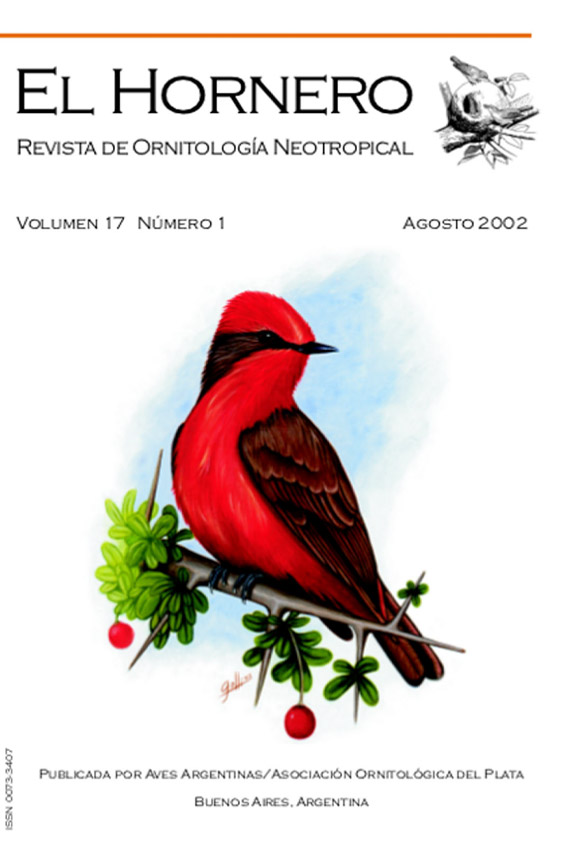Abstract
The relationship previously studied by Webster (1992) among sexual size dimorphism, mating system and body size in the icterids (Icteridae) was analyzed by using the original data, but also phylogenetically independent contrasts and a new molecular phylogeny. Sexual size dimorphism was positively related with body size as well as with harem size of the species. However, the relationship between body size and sexual dimorphism would be the result of the relationship between body size and poliginy degree and between poliginy degree and sexual dimorphism. These results agree with those found by Webster (1992).
References
ALEXANDER RD, HOOGLAND JL, HOWARD RD, NOONANKM Y SHERMAN PW (1979) Sexual dimorphisms andbreeding systems in pinnipeds, ungulates, primates,and humans. Pp. 402ñ435 en: CHAGNON NA E IRONSW (eds) Evolutionary biology and human social behav-ior: an anthropological approach. Duxbury Press, NorthScituate
BJ÷RKLUND M (1991) Evolution, phylogeny, sexualdimorphism and mating system in the grackles(Quiscalus spp.: Icterinae). Evolution 45:608ñ621
BLAKE ER (1968) Family Icteridae. Pp. 138ñ202 en:PAYNTER RA JR (ed) Check list of birds of the world.Volume 14. Museum of Comparative Zoology,Cambridge
BLUMSTEIN DT Y ARMITAGE KB (1998) Life historyconsequences of social complexity: a comparativestudy of ground-dwelling sciurids. BehavioralEcology 9:8ñ19
BRASHARES JS, GARLAND T JRY ARCESE P (2000) Phylo-genetic analysis of coadaptation in behavior, diet,and body size in the African antelope. BehavioralEcology 11:452ñ463

This work is licensed under a Creative Commons Attribution-NonCommercial 4.0 International License.





